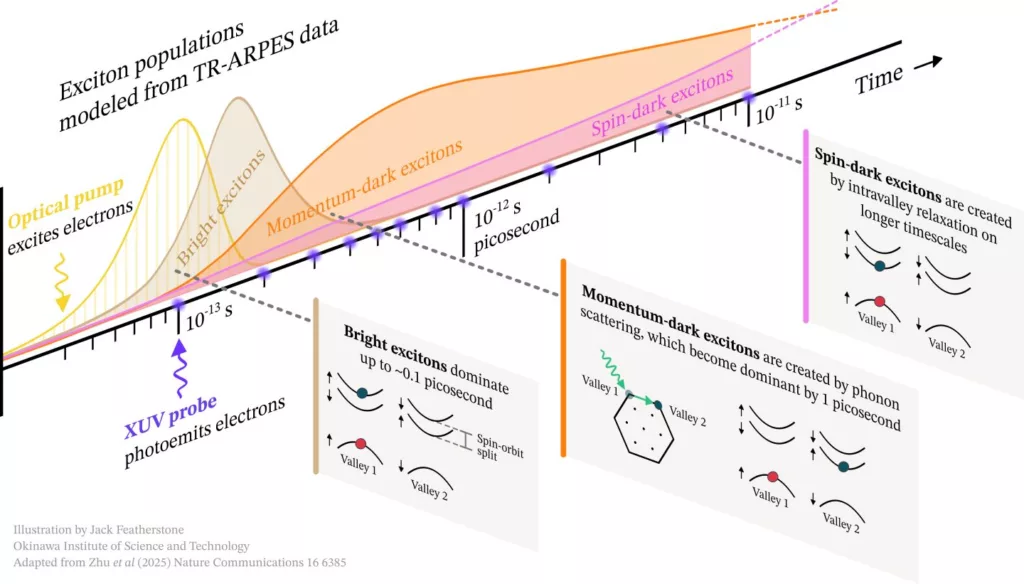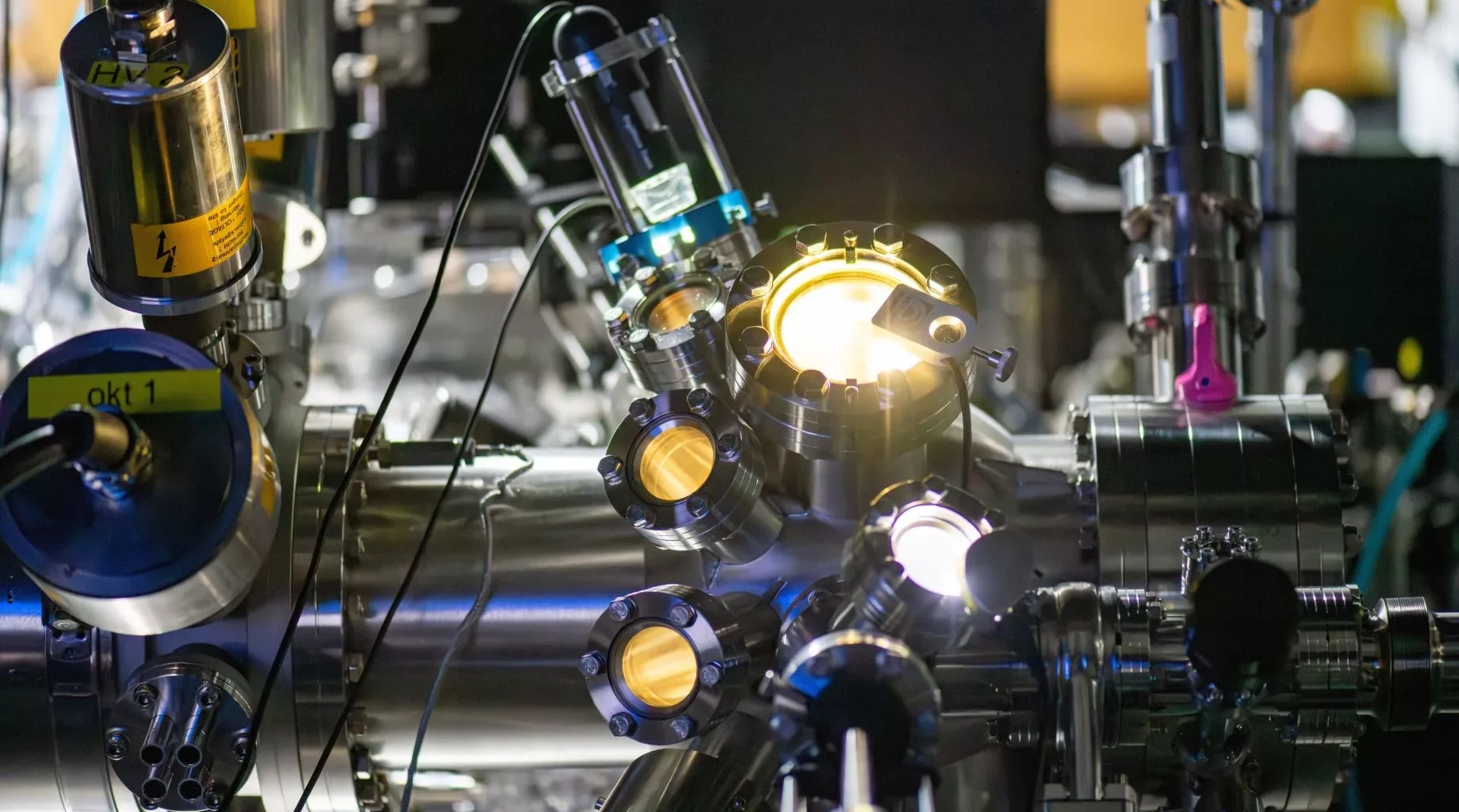In a dimly lit lab on the subtropical island of Okinawa, Japan, a team of physicists has achieved something no one else has: they’ve caught a glimpse of quantum shadows, dark excitons as they evolve in real time. These elusive quasiparticles, long theorized but rarely observed, may hold the key to the next generation of quantum and classical information technologies.
The breakthrough, led by the Femtosecond Spectroscopy Unit at the Okinawa Institute of Science and Technology (OIST), marks a world-first in directly tracking the behavior of dark excitons in atomically thin materials. Their findings, published in Nature Communications, could revolutionize our understanding of quantum computing, data storage, and energy-efficient electronics.
To understand the significance, one must first delve into the complex world of transition metal dichalcogenides (TMDs), a class of ultra-thin semiconductors where electrons and holes engage in tightly choreographed quantum interactions.
When light hits a TMD, it excites electrons from the valence band to the conduction band, leaving behind positively charged holes. These pairs form excitons, which can either emit light brightly or remain hidden in darkness.
A new kind of atomic clock possibly reveal new physics
If the electron and hole share matching quantum properties, such as the same spin and momentum valley, they recombine quickly and emit light. These are bright excitons. But if their properties clash, they’re forbidden from recombining, and no light is emitted. These are dark excitons, invisible to traditional detection methods but potentially powerful as information carriers.
Professor Keshav Dani, who heads the spectroscopy unit at OIST, emphasized the importance of these shadowy particles. He noted that dark excitons are naturally resistant to light-induced degradation, making them ideal for preserving quantum states.
“Their invisibility makes them hard to study,” he acknowledged, “but also gives them a unique advantage in maintaining coherence, an essential trait for quantum technologies.”
Building on a 2020 breakthrough, Dani’s team has now developed a method to create, observe, and manipulate dark excitons, opening a new frontier in quantum research.
New quantum state discovered at the intersection of exotic materials
The study also touches on the emerging field of valleytronics, where information is encoded not in charge or spin, but in the momentum valleys of electrons within a crystal lattice.
PhD researcher Xing Zhu, co-first author of the study, explained the progression: “In electronics, we use charge. In spintronics, we use spin. In valleytronics, we go further, using the crystal’s structure to encode data in momentum states.”
Dark excitons are excellent candidates for valleytronics. Unlike traditional qubits, they’re more resistant to environmental noise and may require less extreme cooling, making them more practical for real-world quantum devices.

Jack Featherstone (OIST), adapted from Zhu et al. (2025) Nature Communications 16 6385.
Dr. David Bacon, now at University College London, helped classify the two types of dark excitons: momentum-dark and spin-dark. Momentum-dark excitons arise when electrons scatter into different valleys, while spin-dark excitons result from spin mismatches within the same valley.
“These mismatches prevent recombination,” Bacon explained, “allowing dark excitons to persist for nanoseconds, a much more useful timescale for quantum operations.”
To observe these fleeting particles, the team used OIST’s cutting-edge TR-ARPES system (time- and angle-resolved photoemission spectroscopy), powered by a proprietary extreme ultraviolet (XUV) source. This setup enabled them to simultaneously measure the momentum, spin, and population levels of electrons and holes, something that had never been achieved before.
Dr. Vivek Pareek, now a Presidential Postdoctoral Fellow at Caltech, highlighted the role of circularly polarized light in selectively creating bright excitons in specific valleys. “These bright excitons quickly convert into dark ones,” he said. “Understanding which species preserve valley information is crucial for future valleytronic applications.”
The team’s observations revealed a dynamic evolution: within a picosecond, bright excitons scatter into momentum-dark states via the emission of phonons. Over time, spin-dark excitons dominate, lingering for nanoseconds and preserving valley information.
Dr. Julien Madéo, a senior member of the unit, summarized the impact: “Thanks to our TR-ARPES system, we’ve mapped how dark excitons retain valley information. This lays the groundwork for dark valleytronics, a field that could revolutionize how we store and process quantum data.”
This pioneering work not only illuminates a previously hidden corner of quantum physics but also opens the door to practical, scalable quantum systems. By harnessing the stability and longevity of dark excitons, researchers may soon build devices that are faster, cooler, and more resilient than anything we’ve seen before.
Journal Reference:
- Xing Zhu, David R. Bacon, Vivek Pareek, Julien Madéo, Takashi Taniguchi, Kenji Watanabe, Michael K. L. Man, Keshav M. Dani. A holistic view of the dynamics of long-lived, valley-polarized dark excitonic states in monolayer WS2. Nature Communications, 2025; 16 (1) DOI: 10.1038/s41467-025-61677-2
